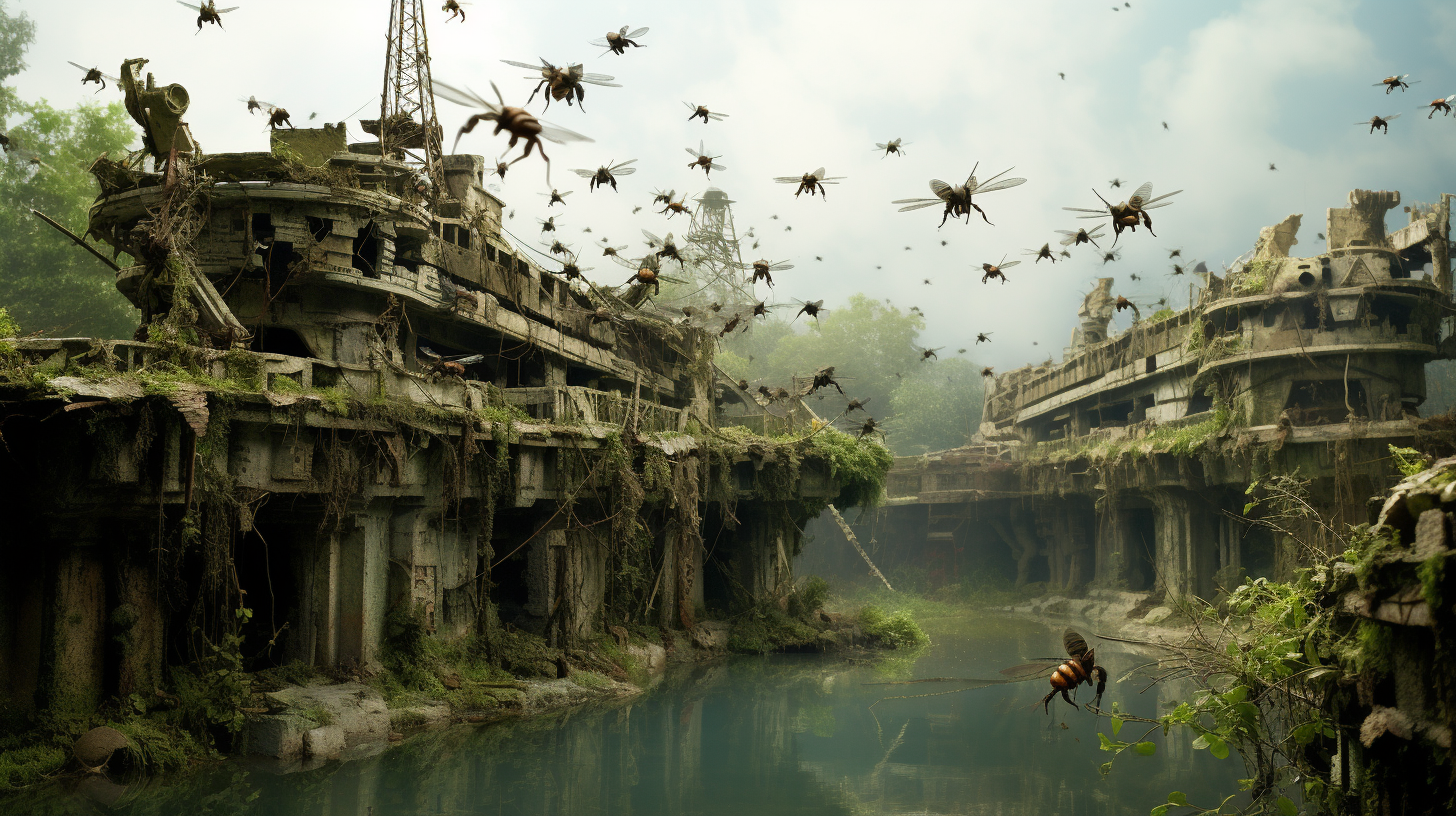Amidst the barren wastelands, once lush with diverse ecosystems, there emerges an old-new world order. Insects, long overlooked in the hierarchy of nature’s stewards, are swiftly becoming the avant-garde architects of our desolate epoch.
These micro architects have begun a silent insurrection, crafting complex structures amidst the ruins of humanity’s failed stewardship. The narrative unravels in the heart of what was once a vibrant metropolis, now littered with the carcasses of skyscrapers, where the tiny denizens are forging empires in the shadows of our fallen cities.
Enter the world of the termites, whose mounds pepper the horizon with an artful defiance, standing tall as testaments to ingenuity and resilience. It’s a view both somber and fascinating—a cityscape reimagined by the smallest of builders. Within this bleak tableau, termites have revitalized the soil, allowing rare green patches to erupt like hope’s last stand against the gray.
But termites aren’t alone in their endeavor. Bees have claimed abandoned edifices, transforming concrete cavities into buzzing hives of activity. Their once-coveted nectar now flows freely, in a twisted reflection of a market no longer driven by human greed but by the sheer will to survive and adapt.
And what of the ants? These tireless workers have built networks of labyrinthine complexity, colonies that stretch beneath our feet and remind us that there is still energy and persistence beneath the surface of this dystopian stillness.
The luscious diversity once characteristic of insects is now a somber uniformity. Industrial toxins have painted them in spectral shades of survival—bioluminescent beetles and iridescent flies are not a spectacle but a sign of the noxious legacy left behind.
The eerie glow of these creatures lights a path through the darkness, drawing us towards the inevitable realization that nature, albeit in a disfigured form, persists. It’s in this darkness that their true mastery is revealed—their structures are not just homes but ecosystems in their own right, supporting a myriad of other life forms clinging to existence.
This tale might sound like the musings of a science fiction novel, yet it unfolds beneath our very eyes. As we witness these insect architects seize the world stage, we’re forced to confront the uncomfortable truth—
Our vision of dominion has crumbled, but from its ashes, an astounding testament to adaptation and endurance has risen.
Yet, in the face of this unyielding march of insect ingenuity, there’s a whisper of melancholy for the vibrancy that’s lost. For when we speak of the architects of tomorrow, we reminisce on the inherent beauty of biodiversity that once was. These insects, in reclaiming their dominion, become the reluctant heroes in a storyline none would have chosen.
As the skies above remain steel-gray with the fumes of a bygone era, and the ground below tells the tale of revival, one cannot help but reconcile with a blend of awe and lament.
In closing, the question lingers: Is this the unmaking or remaking of our world? Perhaps the answer lies in the quiet toil of the insect architects, whose work we are just beginning to understand.
